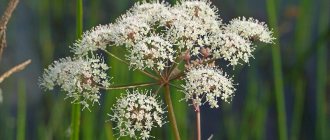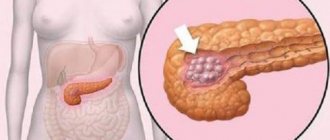The pancreas is one of the important organs in the human body, thanks to which the digestion process occurs normally. Very often, due to poor nutrition, as well as genetic predisposition, a person begins to have problems with this organ. And many want to solve them in non-medicinal ways. One of the folk remedies that is excellent in treating the pancreas is propolis.
Pancreatitis and its causes
An insidious disease, pancreatitis is a dysfunction of the pancreas associated with an inflammatory process. Swelling forms in the ducts, and enzymes are not excreted into the duodenum.
Under the influence of stagnant enzyme juice, the pancreas begins to destroy itself. The disease is accompanied by acute pain in the subcostal region that occurs during attacks.
Pancreatitis can occur at any age, and this disease is increasingly being diagnosed in young patients.
The etiology of the disease is associated with:
- internal reasons - genetic predisposition, post-traumatic period, complications after surgery, excess weight of the patient.
- external factors - eating disorders, alcohol abuse, smoking.
There are two stages of inflammation of the pancreas - the acute period of pancreatic disease and chronic pathology.
The effect of propolis on the pancreas
The medicinal properties of the substance obtained during the production of honey have been known in medicine for a long time. Uza, bee glue, is a powerful natural antiseptic and analgesic.
The substances that make up propolis have a positive effect on the pancreas:
- terpene acids – have antifungal properties;
- flavonoids – have a healing and antimicrobial effect;
- organic acids – provide an analgesic effect and prevent the development of bacteria;
- essential oils, resins and wax – exhibit an antiviral effect;
- tannins – are responsible for the anti-inflammatory properties of bee glue.
Propolis contains more than 270 substances and compounds that have medicinal properties. In medicine, only 110 components are known and proven to have beneficial qualities; the remaining components are currently being studied.
Antiseptic effect
When the pancreas becomes inflamed, pathogenic microflora develops in the gastrointestinal tract. Thanks to bioactive substances, serine, kaempferol, alanine, tryptophan, acacetin, rhamnocentrin, isorhamnetin and others, the growth of bacteria and pathogenic microorganisms stops.
Due to this, inflammation is reduced and swelling of the pancreatic ducts is reduced. The outflow of enzyme juice into the duodenum occurs more intensively.
Regenerating effect
Bee knot has healing and restorative properties. When inflammation occurs, the pancreas tissue swells and stretches. The produced enzymes stagnate in the diseased organ and corrode it from the inside.
Bee glue, due to the organic resins and wax it contains, promotes tissue regeneration and has an enveloping and soothing effect.
B vitamins, tannins, and mineral components cause the growth of new tissues and cellular structures. This property of a natural medicine is widely used in cardiology, cosmetology, surgery and other fields of medicine.
Normalization of digestive functions
Due to inflammation of the organ in the gastrointestinal tract, the digestive process is disrupted - the enzymes necessary for processing food do not enter the gastrointestinal tract from the diseased organ. Uza, suppressing the growth of pathogenic microorganisms, promotes the gradual restoration and normalization of intestinal microflora.
The healing properties of bee glue have a beneficial effect on the production of enzyme juice, which is responsible for the breakdown of food and the absorption of nutrients. After a course of treatment with propolis, gastrointestinal functions return to normal.
Normalization of digestive functions
Separately, when talking about how the pancreas is treated with propolis for pancreatitis, it is worth paying attention to the normalization of digestive functions. The fact is that “bee glue,” without disturbing the normal ratio of beneficial bacteria in the gastrointestinal tract, is able to activate the production of enzymes and gastric juice, which naturally has a positive effect on the functioning of the digestive tract. At the same time, it protects the mucous membrane from the aggressive effects of enzymes, improves the process of bile excretion, and also stimulates the normal separation of hepatocytes - liver cells.
Propolis for pancreatitis and cholecystitis
Pancreatitis is often accompanied by inflammation of a neighboring organ in the epigastric region - the gallbladder. Obstructed outflow of bile leads to the formation of stones in the bladder, which is fraught with surgical intervention. The use of the bee bond in complex therapy solves the problem of treating cholecystitis.
Swelling of the epigastric organs is relieved due to the antiseptic and anti-inflammatory effects of bee glue.
The tannins, organic resins and wax that make up propolis have an enveloping and soothing effect on the tissues of the pancreas and gall bladder. Bee glue effectively fights the unpleasant phenomena that accompany pancreatitis and cholecystitis - heartburn, bloating, nausea, etc.
Regenerating effect
Taking into account the fact that disruption of the pancreas leads to the fact that it begins to destroy its own tissue, special attention must be paid to the fact that treatment with propolis of the pancreas allows one to achieve a regenerating effect, that is, this product activates the process of tissue repair. Amino acids, tannins, vitamins and tannins contribute to this.
It is equally important to say that propolis is very often used in the treatment of pancreatic cancer (oncology), precisely due to its regenerating effect.
The fact is that this medicine reduces the rate of reproduction of atypical (cancerous) cells, and at the same time accelerates the process of tissue and cell restoration.
Treatment of chronic pancreatitis with propolis
During the period of remission, when the acute stage of the disease becomes chronic, it is necessary to receive maintenance therapy. Propolis, with its unique medicinal properties, should become one of the main auxiliary means of complex treatment.
Due to the use of medications, antispasmodics, painkillers and other drugs, the intestinal microflora is disrupted. Bee glue, thanks to organic compounds, reduces the side effects of constant use of medications and enhances their therapeutic effect.
Treatment methods with propolis for pancreatitis
For inflammation of the pancreas, propolis can be used in several dosage forms. The most effective is the use of bee glue in its pure form. To do this, take a piece of product weighing no more than 3-4 grams. and chew for 20-30 minutes, after which the remaining wax is spat out.
The use of tinctures of bee glue and decoctions with the addition of propolis is widespread. There are many recipes for preparing such medicinal mixtures. Each method involves preparing an extract of useful substances from the liquid into the liquid.
This dosage form is especially convenient for the treatment of pancreatitis in children - chewing a waxy piece of propolis is dangerous for a child, but he will drink a tasty drink with pleasure.
Antiseptic effect
When discussing the question of how useful propolis is in treating the pancreas, it is worth discussing the fact due to which it has an antiseptic effect. This effect is ensured by the composition of “bee glue”, because it contains flavonoids, terpenes, as well as cinnamic acid, which can have a pronounced antimicrobial effect.
Important!
The antiseptic effect of “bee glue” was discovered back in the 19th century, when, after opening one of the hives, it was discovered that it was absolutely sterile. Scientists conducted research and found that propolis directly contributed to this.
Recipes with propolis for pancreatitis
The therapeutic effect on relieving pancreatic inflammation is exerted not only by the product itself, but also by various drugs based on it. The most common method is infusion of propolis in water and alcohol.
Such infusions are mixed with decoctions of medicinal herbs, milk, etc. Uza, as a beekeeping product, should not be subjected to strong heat treatment during the preparation of mixtures. When heated above 60°C, most of the beneficial properties of propolis are lost.
Alcohol tincture
Pharmacies sell an alcohol tincture of propolis containing 20% medicinal bee glue. It is prescribed by doctors as part of complex therapy. You can prepare such a medicine at home. To prepare a medicinal tincture you will need:
- propolis – 250 gr.;
- alcohol - 250 ml or vodka 500 ml.
- a dark glass vessel with a capacity of at least 750 ml.
For the tincture you need to prepare the product. Divide the lump of knot into 2 parts. Place one half on a plastic bag, cover with a second bag on top and roll out the propolis with a rolling pin into a thin layer. Do the same with the second part. Both plates must be placed in the refrigerator (not in the freezer!) for 12 hours to harden.
The hardened beeswax needs to be crushed. For this I use a large grater. The resulting propolis shavings are placed in a dark glass container and filled with alcohol or vodka. The vessel must be placed in a cool, dark place to infuse for 10-12 days.
During the infusion process, the mixture must be periodically shaken and the container turned over. When the mixture sits, the liquid will be light brown in color.
The tincture should be taken 2 times a day before meals, having previously prepared a healing mixture - add half a teaspoon of infusion (if it is alcohol-based) or 1 tablespoon (infused with vodka) to 100 grams of boiled water.
How to prepare a water infusion
The use of alcohol tincture is inappropriate for children. To prepare a medicine in water, you need to prepare propolis by grating it. Usa shavings are poured with chilled boiled water in a 1:1 ratio. You need to insist from 12 to 24 hours.
You should not prepare an aqueous tincture of bee bond for future use. It can be stored in the refrigerator for no more than 5 days. Therefore, you need to take a little beeswax for preparation.
You can take the water tincture in its pure form, a tablespoon 2-3 times a day before meals. The course of treatment is 2 weeks. Then they take a break of 14-20 days and repeat the course.
With milk
A propolis-based milk drink is often used for children and adults. The medicinal component is an alcohol or water tincture. To take, dilute 15 drops of alcohol infusion (for children) and 30-40 drops for adults in half a glass of warm boiled milk.
Add more aqueous solution to the milk - 1-2 tablespoons of infusion per 100 ml. This mixture is best taken before bed, as the milk-propolis mixture has a calming effect.
Milk with an extract from pancreatitis should be consumed within 2-3 weeks.
Propolis and honey
Another way to take propolis is to mix bee glue with honey and milk. You need to take:
- 2 tablespoons of warm milk;
- 1 dec. a spoonful of honey;
- 0.5 teaspoons of bonds.
The medicine must be mixed immediately before use. You need to take the product 1 hour before bedtime. The concentrated drug is effective for 24 hours, so you can limit yourself to 1 dose of the mixture per day.
Chamomile decoction with propolis
This drink has an enhanced antiseptic effect. It should be taken 2-3 times a day after meals.
You can prepare it at home in 2 steps:
- 10 gr. bee glue (or 1 tsp), previously ground on a grater, is placed in a thermos and filled with hot (no more than 60°C) water. Leave to infuse for 30 minutes.
- At this time, prepare a chamomile decoction - 10 grams of dried flowers are poured with 300 ml of hot boiled water and simmered in a water bath under a lid for 20 minutes. Then the resulting broth is filtered and brought with boiled water to a volume of 500 ml. Drain the water tincture of propolis through gauze from a thermos into a container.
Take the medicine in the morning, on an empty stomach. Mix chamomile decoction (100 ml) with aqueous tincture of bee glue (1 tablespoon) immediately before use.
In this way, you can prepare medicines by taking instead of chamomile other herbs that are beneficial for the pancreas - coltsfoot, elecampane, dill and others.
Preparation of alcohol tincture
Treatment of pancreatitis with alcohol tincture of propolis and milk gives good results. It is better to purchase such a tincture at a pharmacy.
If a pharmacy tincture is not available, prepare the liquid at home with your own hands. Take 30 grams of fresh product and chop thoroughly. The product crushed in a mortar is poured with half a liter of alcohol or vodka. It is better to store the medicine in a cool place in a dark glass container or wrap the container in dark paper. Shake the container periodically to avoid sediment.
The mixture is considered ready when it acquires a characteristic brown color and becomes similar in appearance to cognac. 60 drops of tincture are added to a glass of milk, the drink is taken in the morning and evening on an empty stomach.
For the treatment of pancreatitis with propolis to work, follow a strict diet. This will relieve severe pain, restore normal functions of the digestive tract, and therefore speed up recovery.
Features of application
Each dosage form of propolis has its own indications for the period and frequency of use. The product in its pure form and water tincture is recommended to be taken in the first half of the day, since bee glue has a stimulating effect on the nervous system.
Alcohol tincture or oza with milk should be consumed before bedtime. You should not drive after taking this dosage form - the drug causes drowsiness.
The course of treatment with propolis should be at least 14 days - the therapeutic effect occurs after 2-3 applications. In order not to cause allergic reactions of the body to the beekeeping product, it is recommended to take breaks of 3-4 weeks between courses. During this time, the body independently, against the background of supportive treatment, restores the functions of the pancreas.
During treatment with propolis, it is necessary to take into account the individual health characteristics of the patient - timely monitoring of the condition should be carried out under the supervision of an endocrinologist.
Contraindications
Like any medicine, oza and drugs containing it have their own contraindications for use. Propolis treatment is strictly contraindicated for people with individual intolerance to bee products.
Bee glue, like honey, is a strong allergen. Patients predisposed to allergic reactions should take propolis with caution. A preliminary test is carried out - a small amount of the substance is applied to the elbow for 24 hours.
Redness and itching in this area indicate that the use of propolis in the treatment of pancreatitis is unacceptable.
People with diabetes should consult their doctor about the use of bee glue. Enhanced control of blood glucose levels is the main condition for the use of propolisotherapy.
Pregnant women, as well as mothers during lactation, should refrain from using cord to avoid negative consequences in the form of allergic reactions in the baby.
Ways to use bee glue
Treatment of pancreatitis with beekeeping products (and in particular propolis) can be done with the help of various medicines, starting with alcohol tincture or a natural product, and ending with milk drinks, honey and decoctions. Each dosage form has its own advantages and characteristics, and in choosing it a person must be guided by his own preferences, so if someone prefers to take propolis in milk instead of tincture, then this is how it should be done.










